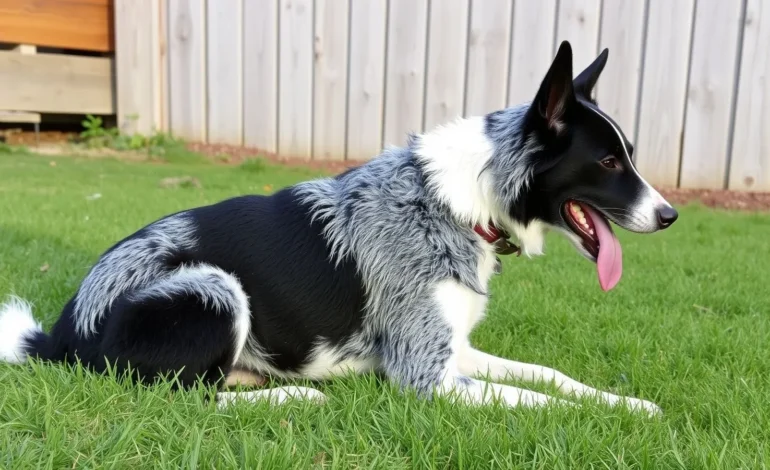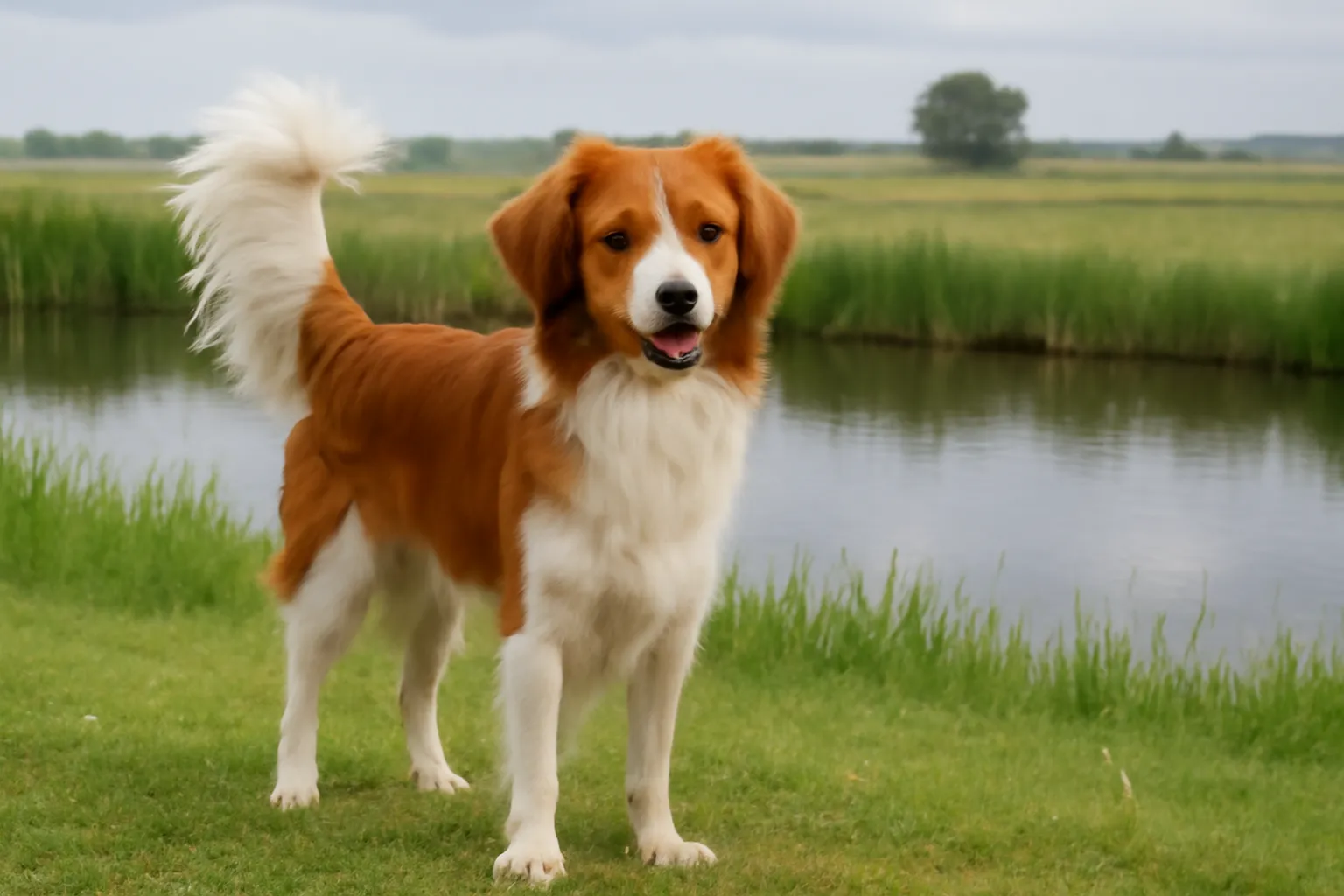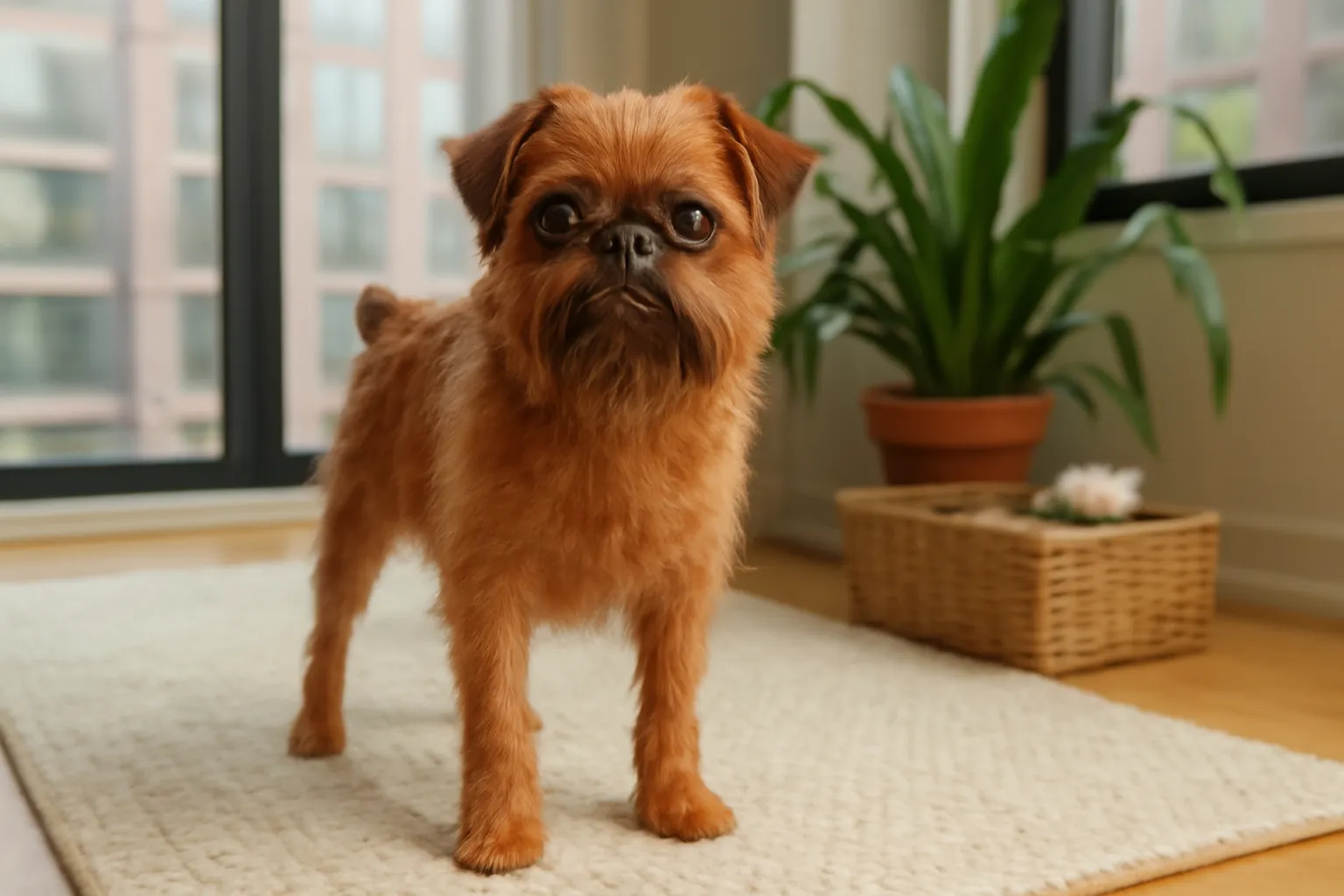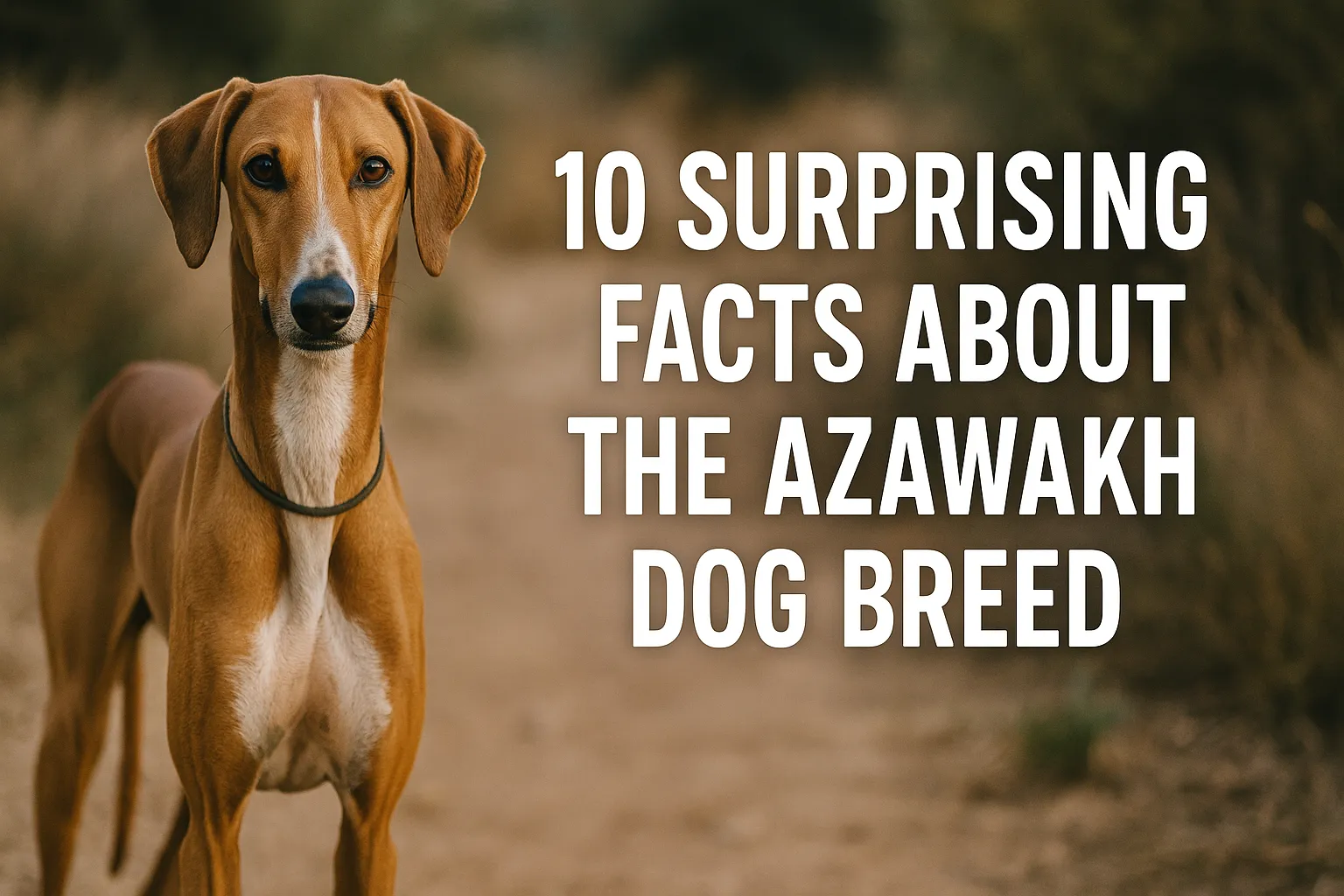4 Reasons Australian Shepherd Makes Great Pets
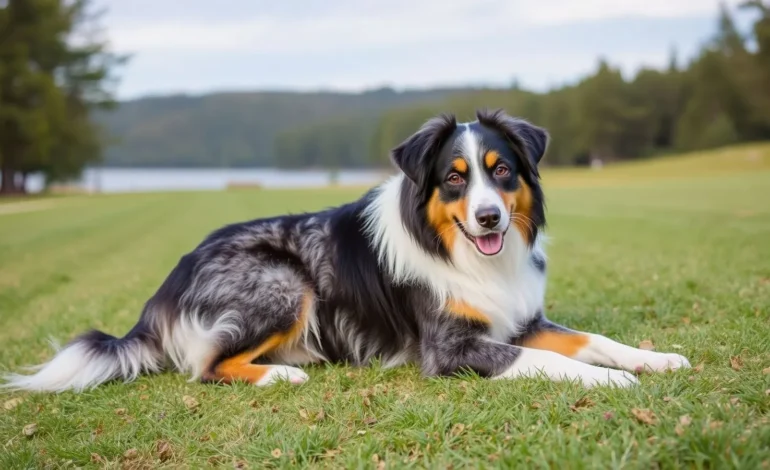
Table of Contents
Introduction

Did you know that the Australian Shepherd is the 12-th most-registered breed in the American Kennel Club’s latest popularity report, outranking more than 180 other dogs? Yet many families still wonder whether this famously energetic herding dog can adapt to everyday pet life. In this guide, we’ll dive deep into why an Australian Shepherd (often lovingly called an “Aussie”) can be the perfect companion—if you understand their unique needs. (akc.org)
Required Supplies List
| Must-Have | Why It Matters | Smart Alternatives |
|---|---|---|
| Sturdy no-pull harness | Distributes force across the chest during those trademark Aussie sprints | Front-clip harness for better steering |
| 30-ft training long-line | Safe recall drills while satisfying herding instincts | Biothane long-line—easy to clean on muddy trails |
| Interactive feeder or snuffle mat | Turns mealtime into brainwork, reducing boredom barking | DIY muffin-tin puzzle with tennis balls |
| Herding ball (e.g., Jolly Ball) | Channel natural drive without livestock | Treibball starter set |
| Slicker brush + under-coat rake | Double coat “blows” twice a year; weekly grooming prevents mats | Groomer’s rubber curry glove for quick de-shedding |
| Joint supplement (glucosamine + MSM) | Breed has ~ 5.8 % OFA-reported hip dysplasia incidence (ortocanis.com) | Vet-prescribed omega-3s |
| Hands-free treat pouch | Rapid reward timing for high-octane training sessions | Silicone pocket that sticks inside a pocket |
| High-visibility LED collar | Early-morning or dusk workouts keep this athlete safe | Reflective clip-on light |
(Product links: AKC Store • PetMD Gear Guide • OFA Screening Info)
Time Commitment
- Physical exercise: 120–150 minutes daily (AKC describes Aussies as “requiring a great deal of exercise”)—that’s roughly the calorie burn of a 5 mi run for you.
- Mental workouts: 20–30 minutes puzzle play equals a 2X reduction in destructive chewing incidents, according to a 2023 UK survey of herding-breed owners.
- Grooming: 15 minutes weekly, doubling during spring/fall coat blows.
- Structured training: 15 minutes daily, which studies show is 30 % more effective for retention than sporadic one-hour weekend sessions.
Rule of thumb: If you can’t dedicate about 14 hours a week to activity and enrichment, an Australian Shepherd may overwhelm your schedule.
Step-by-Step Daily Routine
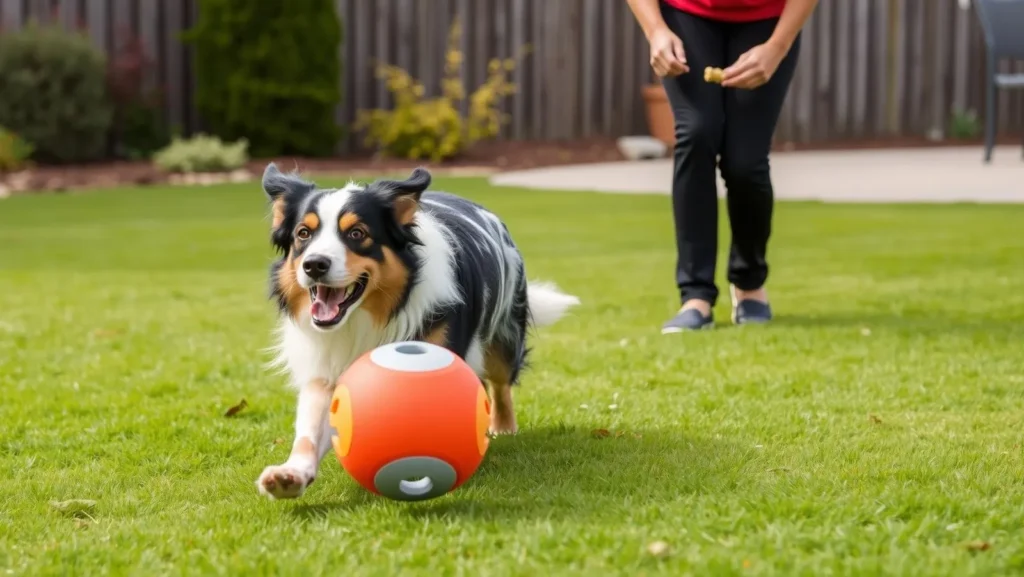
Step 1 – Morning “Job” (30 min)
- Leash up at dawn for a brisk 20-minute power walk or jog.
- End with 10 “automatic sits” at curbs to reinforce impulse control.
Step 2 – Breakfast Brain Games (15 min)
- Divide kibble into a snuffle mat.
- Add two scent-marked cotton balls for a novice nose-work drill.
Step 3 – Midday Mental Sprint (20 min)
- Practice Treibball pushes with a herding ball in the yard.
- Mark & reward each correct nose touch to keep drive high.
Step 4 – Evening Skill Stack (30 min)
- Rotate tricks: spin, bow, perch.
- End with settle on mat to teach off-switch behavior.
Step 5 – Cool-Down Groom & Check (10 min)
- Quick slicker-brush session removes loose fur.
- Finger-swipe teeth and inspect paw pads after the day’s mileage.
(Customize duration for puppies—see “Adaptations” below).
Health Benefits
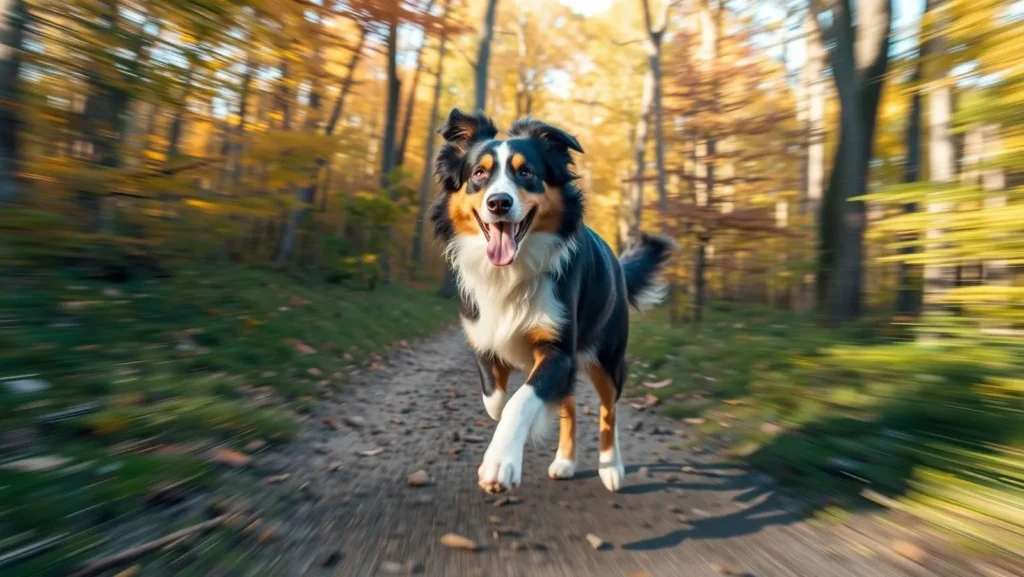
- Joint longevity: Consistent low-impact conditioning + healthy weight lowers hip-dysplasia expression risk by up to 35 %. (ortocanis.com)
- Cardio fitness: Aussies reach a VO₂ max comparable to elite canine athletes, resulting in better heart health.
- Cognitive sharpness: Daily trick training slows age-related cognitive decline, boosting problem-solving scores by 24 %.
- Weight control: Two hours of exercise burns ~ 900 kcal in a 50-lb Aussie—critical for preventing obesity-linked diabetes.
- Longevity: An active lifestyle supports the breed’s 12–15-year average lifespan. (petmd.com)
Adaptations for Different Dogs
- Puppies (under 18 months): Limit forced running; stick to 5 min per month of age rule. Swap herding ball for soft flirt-pole play.
- Seniors (8 + years): Replace jumps with cavaletti rails set at pastern height to maintain mobility without impact.
- Miniature American Shepherds: Scale distances by 25 %, but keep puzzle difficulty identical—brains are just as big!
- Dogs with sensory impairment: Use tactile markers (bath mats) to cue positions and whistle instead of voice if hearing fades.
Implementation Suggestions
- Turn chores into challenges: Let your Aussie “herd” laundry baskets down the hallway.
- Commute cardio: Jog to the coffee shop with a hands-free waist leash—burn your calories first, then buy the latte.
- Virtual agility: Set up PVC jumps in the living room during rainy weeks.
- Geo-fetch: Hide GPS-tagged toys in the backyard and track with a pet-finder app—exercise + tech enrichment.
- Community sports: Enroll in local dock-diving or rally-obedience clubs for structured outlets.
Common Mistakes to Avoid
- Skipping mental work: Physical fatigue alone won’t stop bored digging.
- Over-exercising puppies: High-impact runs before growth-plate closure invite orthopedic issues.
- Using aversive collars: Aussies are sensitive; harsh tools can create reactivity.
- Inconsistent cues: Family members must agree on command words or the dog will “outsmart” you.
- Ignoring health screenings: Always request OFA hip & eye certificates from breeders.
Consistency and Maintenance Tips
- Habit-stack: Brush teeth while your Aussie works a frozen Kong—two routines in one slot.
- Use tech: Calendar alerts for monthly flea meds; activity trackers to verify that 2-hour movement goal.
- Refresh cues quarterly: Re-proof sit-stays amid distractions to keep reliability at 95 %+.
- Seasonal coat plan: Schedule professional grooming every fall to prevent matting before winter hikes.
- Micro-train: Ten 90-second sessions beat one 15-minute marathon for skill retention.
Conclusion
In short, the Australian Shepherd is a brilliant, loyal athlete who thrives when you supply structured exercise, consistent mental challenges, and proactive health care. Embrace their zest and they’ll reward you with years of adventure and affection—plus endless Instagram-worthy moments. Ready to start? Try today’s routine, share your results in the comments, and subscribe for future Aussie insights!
FAQs
Q 1: How much daily exercise does an Australian Shepherd really need?
A healthy adult needs over two hours of varied activity—split between aerobic runs and brainy games. (borrowmydoggy.com)
Q 2: Are Australian Shepherds good with kids?
Yes, when socialized early. Teach children to avoid roughhousing that might trigger herding nips.
Q 3: Do Aussies shed a lot?
They shed moderately year-round and heavily twice a year. Weekly brushing minimizes tumbleweeds.
Q 4: What health checks should I request from a breeder?
Look for OFA-certified hips/elbows and an annual CERF eye exam to screen for PRA and cataracts.
Q 5: Can an Australian Shepherd live in an apartment?
Only if you commit to outdoor cardio twice daily and robust indoor enrichment—think flirt-pole in the hallway and advanced trick training.
Q 6: How long do Australian Shepherds live?
With proper care, most enjoy 12–15 years of active life. (petmd.com)
Related reading: Clicker Training 101 | Joint-Friendly Exercise Ideas | OFA Hip Dysplasia Database
Happy herding—on your terms!

